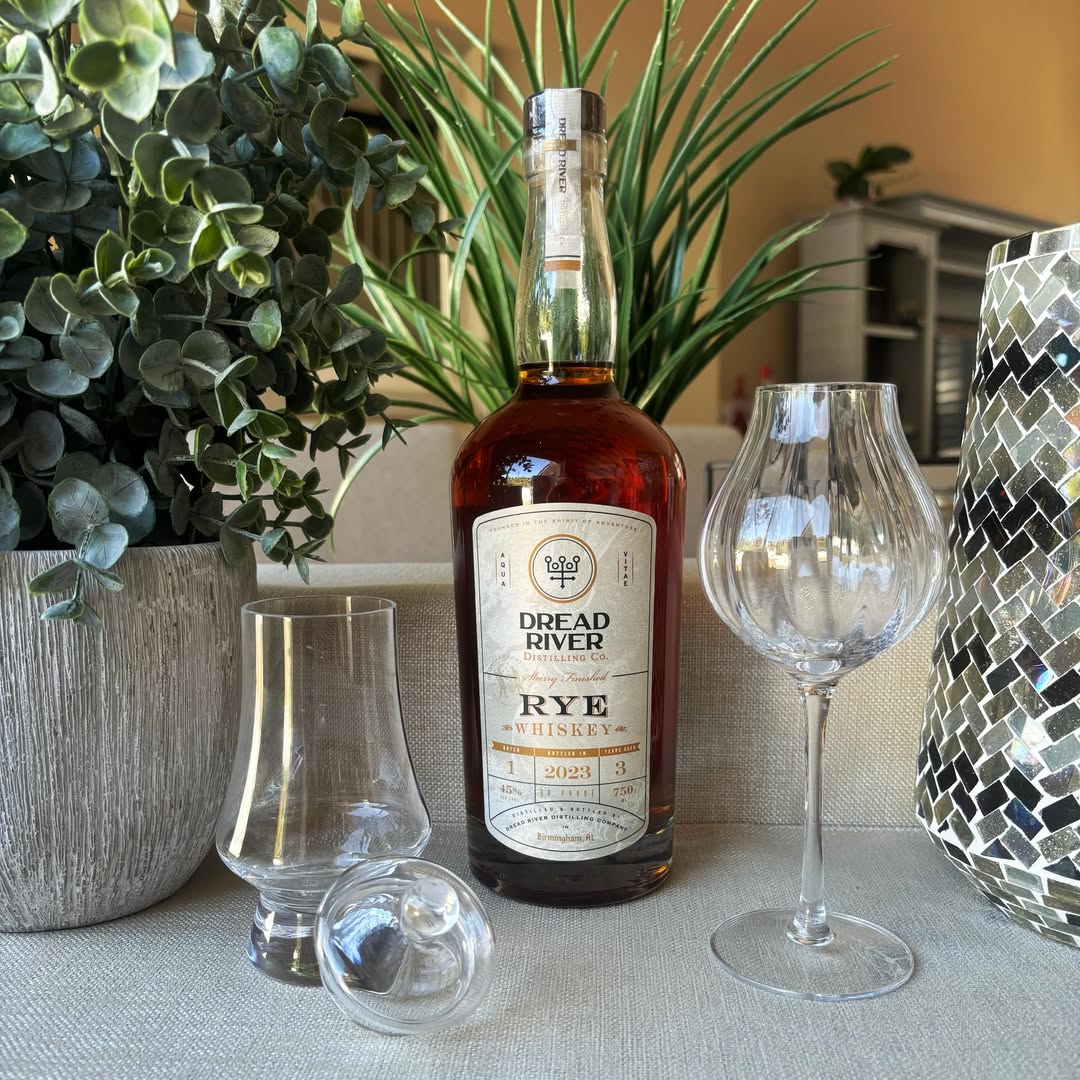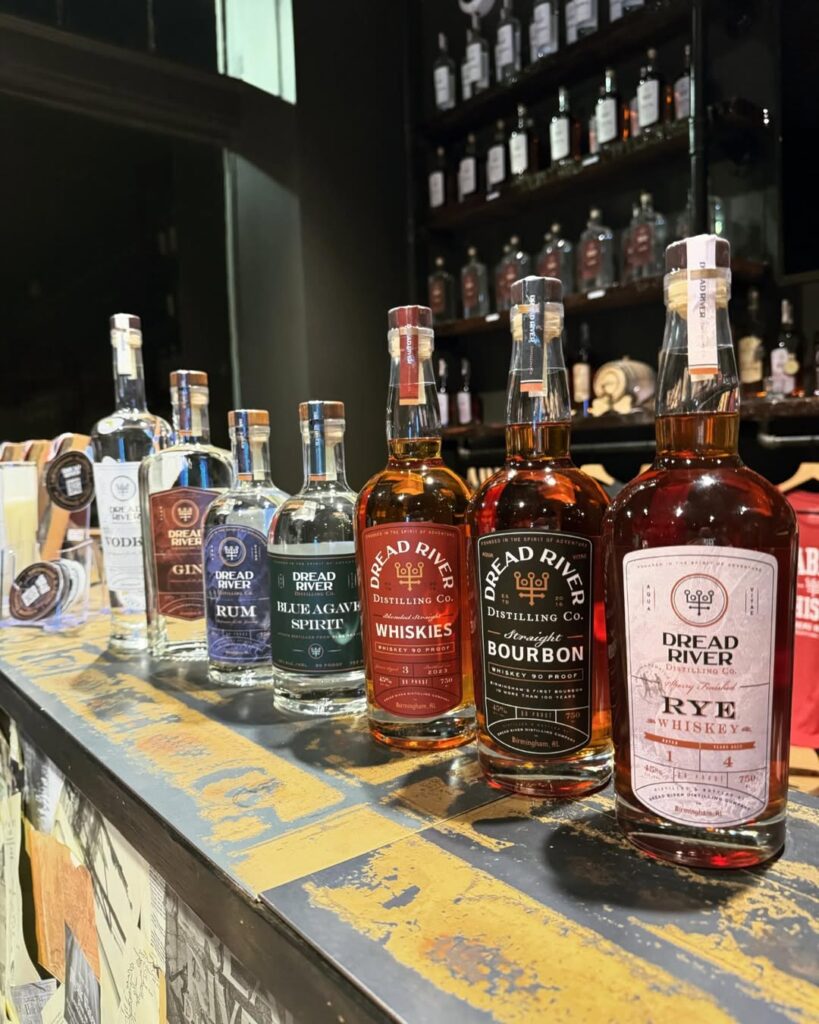How to Taste Whiskey Like a Pro: 5 Simple Steps to Unlock Every Note
October 9, 2025
Dread River

Every glass of whiskey holds more than flavor. It carries a journey shaped by fire, wood, and time. From the first spark of char to a bright lift of citrus or the quiet spice that lingers, each note invites you deeper into the story of the spirit.
In this blog, we will provide you with the 5 professional steps to elevate your whiskey tasting experience, including a quick flavor wheel to guide your palate, and essential glassware tips that help every pour sing.
From Sip to Symphony
At Dread River, we’ve judged tasting panels, traded stories with barrel masters, and mapped out every curve of a flavor profile. Today, we share our playbook on how to taste whiskey.
Tasting whiskey is an elaborate experience that unfolds in layers. The journey begins with you taking in the aroma of the whiskey and ends with a desire to keep you reaching for another glass.
Step 1: Choose the Proper Whiskey Glass
Glassware is the unsung first step in learning how to taste whiskey. The glass you drink from can alter your perception of whiskey. Some glass shapes are designed to concentrate aromas, guiding them to your nose while softening the sharpness of ethanol, as shown in this study on glass shape.
Classic Glencairn or tulip-shaped copita glasses are widely used by expert tasters as they draw out the subtle floral, fruity, and spicy aroma hidden in each pour.
If relaxation is the goal, then avoid using Glencairn or tulip-shaped copita glasses. Instead, try a NEAT glass or rocks tumbler to avoid getting overwhelmed by the aromas. These glasses are often preferred when drinking whiskey on ice as they have a wider mouth. More surface on the whiskey means the heat backs off. The flip side is that some of the lighter aromas fade.
Keep the pour small, about one to two ounces, at room temp. Then adjust. A few drops of water can wake up vanilla, fruit, and grain. Want it colder? Chill the glass and use one big cube so it cools down without turning watery.
Step 2: Engage Your Eyes
Any good whiskey tasting guide will tell you that the whiskey tasting journey starts with a visual narrative of color and motion. Pale gold usually signals a younger whiskey from new charred oak. Darker, closer to mahogany, often points to extra time in wood or a finish in sherry or port. These color indications speak softly of cask type and whiskey’s path.
After color, watch how the whiskey moves. Swirl gently and notice the trails that slip down the glass. Those slow trails on the glass tell you about body and texture, not sweetness. With the right glass, these cues set you up for what you are about to smell and taste.
Step 3: Master the Nosing Ritual
Whiskey tasting isn’t merely about what hits your palate; it begins much earlier than the first sip. Nosing is an art form where you can discover layers of character behind each pour. Here’s how to do it properly.
Start with the right glass. A tulip shape gathers the aroma and keeps the heat from rushing your nose. Keep the glass slightly tilted and take short sniffs so the alcohol heat stays in check. This balances alcohol vapors and allows aromas to flow unimpeded. Refrain from one deep breath. Take light, brief sniffs instead.
Swirl the whiskey gently while holding the rim. Near the surface, you might get orchard fruit, citrus, or flowers. Go a bit deeper and oak, char, and spice start to show.
Use a whiskey flavor wheel as a simple guide while you name what you pick up. As you practice, your vocabulary for aroma increases, and each dram becomes a more detailed narrative.
Want to push your nosing a little further and see how oak, char, and time shape flavor? Join us on the Legends of the River Distillery Tour. Our team walks you through barrels, wood, and process so each pour tells its own story.
Step 4: Sip, Chew & Breathe

Once you’ve nosed the whiskey, it’s time to taste, but don’t rush it. The first sip is simply a primer. Take a small sip and let it coat your palate. Give it a moment to warm and settle before making the call. Try to avoid judging the whiskey on this initial contact.
For your second taste, try what is known as the Kentucky Chew. Take a small sip and move it gently around your mouth so every part of your palate gets a turn.
Notice how each area responds. The front often shows sweetness, the middle brings spice or fruit, and the back can reveal a touch of bitterness or smoke.
As you swallow, attempt a soft retronasal breath, and blow gently out your nose. This releases concealed esters and brings forth delicate smells that coordinate with the taste. Check the flavor wheel and note what comes through. You might find vanilla cream, cracked pepper, roasted nuts, or dried fruit.
Our whiskey tasting guide emphasizes that this step is all about exploration. Each sip tells a layered story, and with mindful chewing and breathing, you’ll uncover its full complexity.
Step 5: Add Water, Record the Finish
The last step is to finish the experience. A couple of drops of water can revamp a pour, and science confirms it. Water releases esters, bringing forward fruit or flower aromas, and easing tannins and alcohol pungency. Watch out, though. Excessive water will fade the whiskey’s personality.
After sampling neat and with water, watch the finish. Is it short, medium, or long? Note what hangs on, like dark chocolate, orange oil, or a little char. Jot it down in a notebook or on your phone. Over time, those notes make it easier to see how style, cask, and age shape the flavor.
Tie it back to the flavor wheel and build a steady vocabulary so each glass is easier to describe and easier to remember.
Pro Tips to Sharpen Your Palate
Take a journey of sensory subtlety befitting the world’s most discerning gourmets. Start with A-B tastings: have a cask strength whiskey transport you with its unbridled power, then ground you with a proofed serving, and observe how water reveals fine whispers beneath the blaze.
Then journey across time and heritage, comparing the spicy mystique of rye to bourbon’s honey-rich richness; every swallow tells a story in contrast and in complexity. In between, cleanse your palate with a piece of an unsalted cracker or a fresh green apple, the humble, refined trick of experienced tasters. First and foremost, select a proper whiskey glass. The tulip’s soft curve brings aromas for a journey of discovery with each whiff. Get deeper into styles in our guide about unique whiskey styles.
Dread River Tasting Flight, Practice With Us

Walk into our tasting room and you’ll see old oak lining the walls, standing beside the clean lines of a modern distillery. That’s where the Dread River tasting flight begins, with three pours: Straight Bourbon, Sherry Finished Rye, and Blended Whiskey. Each one shows off a different side of what we do, from the raw grain notes to the richness that only years in wood can bring.
Each tasting flight includes a guided walk-through to connect what you smell and taste. Think of it as a live whiskey guide, with our team talking through nose, palate, and finish in the moment. Reserve your seat this weekend and let each pour sharpen your senses.
Immerse yourself in our tasting room and take it all in. It’s the perfect way to practice everything you’ve learned about how to taste whiskey and to discover your own favorites from the Dread River collection.